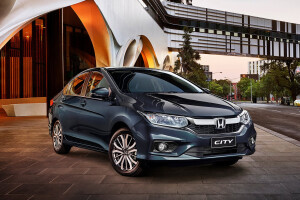Latest Review

2019 Honda City Range Review
The Honda City sedan has a spacious interior and large boot that makes it feel like a bigger car. The City is pleasant to drive, has a 5-year warranty, and doesn’t use much fuel.
What stands out?
The Honda City is the sedan version of the popular Honda Jazz hatchback, with a longer wheelbase resulting in a spacious interior and cavernous boot space. It feels more planted on the road than most city cars, and has a zippy but frugal engine. Like all Hondas it comes with a five-year warranty.
What might bug me?
Complaints from the backseat from tallish passengers, because sweptback roofline limits headroom.
Knowing there are similarly priced city cars with active safety features such as automatic emergency braking, which isn’t even an option on the Honda City.
Driving at less than 80km/h on the space-saver spare until you can fix your full-sized flat tyre.
What body styles are there?
Four-door sedan, with five seats.
The City drives its front wheels, and it is classed as a light car, lower priced.
What features do all Honda City versions have?
Air-conditioning, cruise control, power-adjusted exterior mirrors, LED daytime running lights.
A hill-start assist system, which operates the brakes automatically to make take-offs on hills easier.
A multi-information display for the driver that presents the average fuel consumption, range-to-empty and outside temperature, and a programmable speed alarm.
Steering wheel controls for the audio system, a Bluetooth phone and the cruise control. A Siri eyes-free voice command function.
A 7.0-inch colour touchscreen interface for the Bluetooth phone and the audio system - which has an AM/FM radio, and USB and HDMI sockets.
Remote keyless entry, and a 12-volt socket for rear seat passengers to ply in or charge devices.
A multi-angle reversing camera that offers normal, wide and top-down views. Rear parking sensors can be added as an option for extra cost.
A space-saver spare wheel, with speed and distance restrictions.
Six airbags. Electronic stability control, which can help you control a skidding car. (For the placement of airbags, and more on Jazz safety features, please open the Safety section below.)
Every Honda Jazz carries a five-year, unlimited distance warranty.
Which engine uses least fuel, and why wouldn't I choose it?
There is only one engine in the Honda City, a 1.5-litre four-cylinder that, according to official combined cycle tests uses a miserly 5.8 litres/100km in the VTi with automatic transmission, and 5.9 litres/100km with the VTi manual, and slightly heavier VTi-L auto.
The auto transmission is a continuously variable type (CVT). The manual gearbox is a five-speeder, and offered only in the least costly model, the VTi.
The CVT does a good job in getting the 1.5-litre engine up to speed and includes a Sport mode if you really need to dial in some extra revs.
(Power outputs and all other Honda City specifications are available from the Cars Covered menu under the main image on this page.)
What key features do I get if I spend more?
The least costly City, the VTi, comes with cloth-covered seats, manually controlled air-conditioning, and steel wheels with plastic trim. A manual gearbox is standard, or you can pay more for an auto.
Spend more for a Jazz VTi-L and auto transmission is standard. You also get a leather-appointed seats, steering wheel and gear knob.
The infotainment system gains satellite navigation and audio speakers are doubled to eight, with the addition of four tweeters.
The external mirrors can be power-folded out of harm’s way in tight parking spaces.
Front fog-lights, and an extra 12-volt socket for rear seat passengers to access.
Wheels are made from nicer looking aluminium alloy, dispensing with the plastic trim caps. The wheels also grow an inch in diameter to 16 inches, with the tyre sidewalls shrinking slightly to compensate – again mainly to provide a sportier look.
Climate control air-conditioning maintains a set temperature, and a smart key allows you to unlock the car while the key remains secure in your pocket or bag.
Paddle-shifters on the steering wheel give you some manual control of the CVT auto.
Does any upgrade have a down side?
No item of extra equipment has a drawback in itself, but the City’s VTi’s excellent value dissipates as you progress to VTi-L.
Of five paint colours offered for the City, just one – Rally Red – is standard. All others cost an extra $500.
How comfortable is the Honda City?
The City is quite comfortable to drive and ride in. The longish wheelbase makes it feel quite planted and the suspension is good at dealing with urban speed humps and smoothing out patchy arterial roads.
It’s comfortable from a seating and ergonomic viewpoint too. A tilt and reach adjustable steering column and simple yet supportive front seats, with height adjustment for the driver, promote a comfortable position and forward vision is very good. Road and engine noise are well supressed even out on the highway.
The City’s cabin materials, including the fabric or leather seat trim, and carpet are of good quality, but are a little undermined by hard-plastic dashboard and door-trim plastics.
The interior is well laid out and the dashboard presentation is neat with most displays and buttons intuitively located. The colour touchscreen display is appealingly crisp and is only let down by outdated graphics on the VTi-L’s sat-nav system.
Road and engine noise are well supressed even out on the highway.
What about safety in a Honda City?
Every Honda City has anti-lock brakes, stability control, six airbags, hill-start assist, and a comprehensive reversing camera display.
The six airbags are in the usual places: two directly in front of the driver and front passenger; one alongside each front occupant at chest level to protect you from side impacts; and a curtain airbag on each side at head level, protecting occupants front and rear from side impacts.
The forward location of the City’s A-pillars (those either side of the windscreen) and large, downward tapering front side windows allow good vision for tight corners and roundabouts, increasing primary safety.
The City comes standard with LED daytime running lights, which make it easier for other drivers to see you.
Automatic emergency braking is not available on a Honda City.
The Australasian New Car Assessment Program (ANCAP) awarded the Honda City its maximum five-star rating for safety, in January 2014.
I like driving - will I enjoy this car?
The City is a much nicer car to drive than its more popular Jazz hatchback sibling.
The City’s 4455mm length and 2600mm wheelbase is longer than most comparable sedans and hatches, and it feels more planted on the road and handles tight bends a lot better than most city cars. And, unlike the Jazz, you don’t feel like you’re about to be blown away in strong winds.
The engine offers very good power and performance for a light car, and the CVT auto does a good job in getting the 1.5-litre engine up to speed and includes a Sport mode if you really need to dial in some extra revs.
On the City VTi-L, the CVT auto can be manually operated using gearshift paddles behind the steering wheel, which makes it more fun than some conventional automatics.
How is life in the rear seats?
The City offers decent legroom that rivals some medium cars, but headroom is limited by the sloping roofline.
The seat can carry three passengers, with lap and sash belts for all, though things would be a little tight for three adults.
If you only have one or two rear-seat passengers, the middle backrest incorporates a fold-down armrest with two cupholders .
The City VTi has a 12v socket at the back of the centre console for rear passengers to plug in or charge devices. The VTi-L has two sockets.
How is it the City for carrying stuff?
The City is one of the most practical sedans in its class. Boot space is a cavernous 536-litres, which is better than some SUVs, and its low boot lid makes loading easy.
The rear seats fold down with a 60:40 split to take longer loads.
Where is the Honda City made?
The Honda City is manufactured in Thailand.
Are there any rivals I should consider?
The Mazda 2 Sedan also offers a big boot space, is a more enjoyable car to drive and is available with automatic emergency braking. The Hyundai Accent Sport sedan also represents good value, but isn’t as refined.
I like this car, but I can't choose which version. Can you help?
The City VTi is our pick of the line-up. It is well equipped for the money and while the VTi-L has additional features, they don’t add enough in terms of drivability and comfort to justify the price hike.
Are there plans to update this model soon?
The current-generation Honda City arrived in the middle of 2014 and received a mid-life facelift in March 2017, which included stylish looks courtesy of a revised grille, bumpers and new-look headlights with daytime running lights. Interior enhancements included a new-look instrument panel with a simplified infotainment system and bigger 7.0-inch touchscreen.
An all-new Honda City is expected to be revealed in 2020.
Score breakdown
Things we like
- Roomy interior and boot space
- Base price
- Five-year warranty
Not so much
- Busy styling, no auto emergency braking
News
-
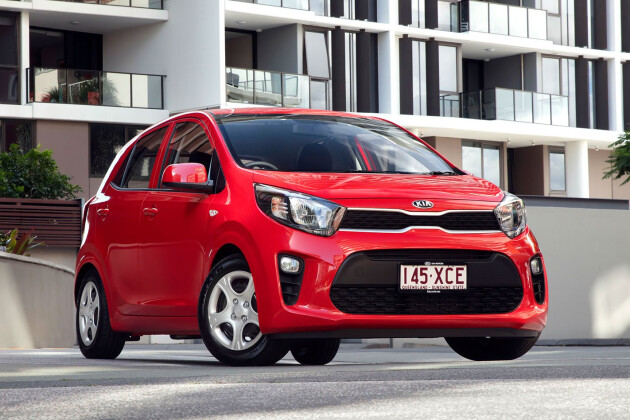 Advice
AdviceAustralia’s five cheapest new cars
Here are five solid new car options when budget is the main priority
-
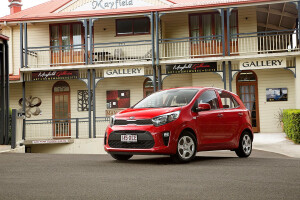 Advice
Advice2017’s best budget cars
Shopping for an affordable runabout? Here are four of the most competent cheap cars under $20,000 presently available in Australia
-
.jpg) Advice
AdviceAustralia’s 12 cheapest cars of 2017
On the hunt for a new car but only have a used-car budget? Here are 12 cars straight from the factory that retail for $16,000 or less.
-
 News
News2016 Paris Motor Show: Honda Civic Type R prototype revealed
Early look at Honda's next-generation hot hatch
-
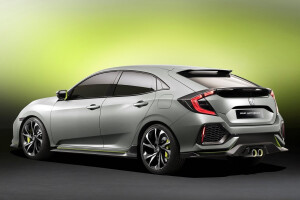
Honda Civic Type R arriving 2017 from sub-$50K
-
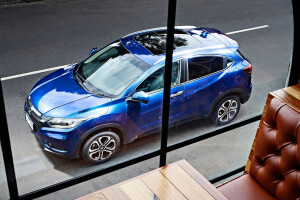
Honda HR-V and City LE models add value
-
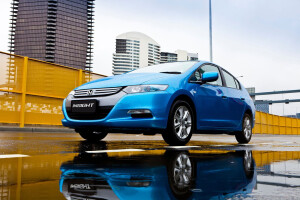
Aussie airbag recalls about to crash through 1m cars
-
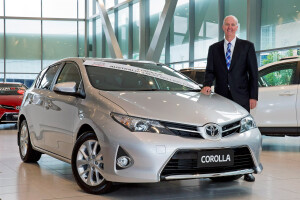
2014 car sales: Australia’s Hottest 100


